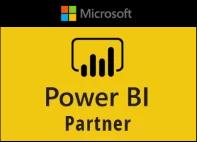Embark on a journey of 'Innovation' and 'Excellence' in your custom eLearning project, guided by Prioxis's skilled and resilient team of education software developers. Our experts are equipped with a deep understanding of cutting-edge technologies and proven methodologies to create engaging and impactful eLearning experiences.
Your Partner in Educational Software Innovation
The Prioxis Advantage: Voice of Success.
Testimonials from clients who have experienced unparalleled Education software development services to achieve their business goals with Prioxis.
Seize the opportunity to dominate the Billion dollars worth eLearning market, leveraging technological innovations that revitalize dull classrooms and move beyond traditional textbook education with scalable eLearning software development company
Unlock endless innovation with Prioxis's leading EdTech software development team. Join us as we explore vast possibilities for creating innovative educational software solutions for education industry. Let's work together to shape the future of eLearning software, perfectly suited for the upcoming generation's learning needs.
Request Your Free Consultation Today
Schedule a CallAdvancing Educational Excellence through Software Development
Use the latest software development methods with Prioxis to make your organization work better, stay ahead in the market, and improve how things are done. We're experts in creating new and complete educational software services that change how education works. We help schools, businesses, educational places, and new companies make their educational tasks easier with a variety of educational software options.
Trusted by Global Brands and High-Growth Startups Alike
Get StartedEnd-to-End Educational Software Development
At Prioxis, educational software development encompasses the creation of Learning Management Systems (LMS), eLearning portals, course management systems, and mobile learning (mLearning) solutions tailored for academic institutions, enterprises, and EdTech companies. Our team of seasoned professionals possesses the advanced expertise required to develop scalable edtech architectures utilizing the latest in web, mobile, databases, and cloud technologies. Benefit from our market-proven EdTech solutions, complete with comprehensive support from 'The Experts' at Prioxis.
eLearning Software Development Solutions Tailored to Every Learning Requirement
Prioxis provides top-notch services for creating eLearning software that makes learning easier and more effective. Our educational apps and online learning platforms are easy to use and of the highest quality. As the perfect partner for education projects, Prioxis stands for unmatched excellence in educational technology. We have a strong track record in digitally transforming education. With more than five years of experience in eLearning technology, we promise to build solutions that greatly improve online education.
Educational Technology Consulting
Let us guide you through setting up your learning platform. We'll help make sure it fits your goals perfectly, reaches the right people, and helps learners in the best way possible. Our advice covers everything from figuring out what you need, to picking the best tech, to putting your plans into action.
LMS Development
We build Learning Management Systems (LMS) that make online learning better. Expect lively virtual classrooms, courses that fit what you need, and smart ways to see how well learners are doing. Our work makes learning smoother and helps keep students more interested, which is great for schools looking to add eLearning.
Enterprise LMS Development
Create a custom LMS for your business with Prioxis. It's designed just for you, helping train your team with online courses, lessons, and certifications. Our system is easy to use and grows with you, meeting the learning needs of all your departments.
eLearning App Development
Get everyone learning on the go with our custom eLearning apps, for computers and phones. Prioxis has been doing this for years, making apps that bring meaningful training and skills right to your fingertips. Our apps work everywhere and make learning more effective.
Custom eLearning Development
With Prioxis, your eLearning content will be just what you imagined: fun, interactive, and really engaging. Our top EdTech experts make sure your training hits the mark, with a track record of success that speaks for itself.
eLearning Software Modernization
Keep your eLearning tools up-to-date with the latest tech. We add new features, move you to better systems, and refresh how everything looks and works. Our updates make sure learners get a top-notch online education.
MVP Development
Start your education project with a test version to see if people like it. Prioxis helps you build this MVP with experienced developers and smart planning. This way, you can grow your online learning services smartly and with less risk.
Prioxis: Your Trusted Partner in Airline Software Development
Prioxis delivers custom education software with AI-driven solutions, ensuring seamless integration and adherence to industry standards. We provide comprehensive, future-proof services for MRO, crew management, and quality assurance.
Discover Our Airline Operations Expertise
Real-time access to transparent & Traceable Data
Experience flexible connectivity to other systems for seamless data exchange
Data protection security with advanced access policies
Experience lightning-fast performance
Navigate with ease with user-friendly interface
Stay connected on the go with mobile apps
Pandemic proof, future ready technology
Leverage The Benefits of Educational Software Development
Accessible Educational Software Development
Engaging eLearning Experiences
Flexible Content Creation Tools
Robust Security and Efficient Management
Advanced Learning Analytics
Harness Data-Driven eLearning Software Solutions
- Virtual Classroom
Enhance remote education with Prioxis' virtual classroom solutions, designed for optimal engagement and seamless access.
- Cohort Learning Platforms
Prioxis' cohort learning platforms facilitate collaborative educational experiences, supporting knowledge exchange within professional communities.
- Corporate Training Systems
Prioxis delivers bespoke corporate training systems, engineered to address specific business challenges and accelerate professional growth.
- Gamification Software
Integrate engaging learning experiences with Prioxis' gamification software, tailored to elevate educational content through interactive challenges.
- Microlearning Platform
Leverage Prioxis' microlearning platform for concise, impactful learning sessions, optimized for efficiency and retention in professional settings.
- Language Learning Software
Our language learning software offers a comprehensive approach to language acquisition, enhancing communication skills across global teams.
- Academic Software
Prioxis specializes in academic software solutions, supporting the diverse technological needs of educational institutions for enhanced learning outcomes.
- Learning Experience Platforms (LXPs)
Prioxis' LXPs offer a dynamic, personalized learning environment, engineered to adapt to individual learner needs and preferences.
- Assessment & Evaluation Software
Our assessment and evaluation software delivers insightful analytics and feedback, enabling educators to measure and enhance learning efficacy.
- Multi-platform Educational Apps
With Prioxis, access to educational content is streamlined across multiple platforms, ensuring a consistent and user-friendly learning experience for all participants.
Our Certifications
Our track record is solid, backed by a wide range of professional certifications and institutional accolades that enable us to set new standards in the technology services sector.
Explore Our Achievements Microsoft Gold Partner
Microsoft Gold Partner Microsoft Power BI Partner
Microsoft Power BI Partner Clutch Certificate for Top Mobile App Developers
Clutch Certificate for Top Mobile App Developers Nasscom Certified Company
Nasscom Certified Company Top Rated on Glassdoor
Top Rated on GlassdoorThe Prioxis Process: Your Pathway to Custom eLearning Software Development
Discuss your educational software development visions and ideas with our custom software experts and leverage our cutting-edge solutions to empower your eLearning services.
Strategic Planning and Consulting
Initiating with comprehensive planning to align with your business objectives.
Bespoke Visual and Technical Design
Crafting user experiences and robust technical frameworks designed for scalability.
Agile Development Process
Efficient and transparent development using the latest agile methodologies.
Streamlined Deployment
Ensuring a smooth transition to live environments with minimal operational disruption.
Continuous Upgrades and Support
Providing ongoing enhancements to keep your software at the leading edge.
Boost Your eLearning Impact
Connect With Our Software Development Experts and get 5X Efficiency with our Custom Software. Submit Your Requirements.
Latest Insights
FAQ
01What makes eLearning software development essential for today's education?
eLearning software development is pivotal in modern education, offering anytime, anywhere access to learning resources. It dramatically enhances knowledge retention and skill acquisition, provides superior assessment tools, opens avenues for monetizing educational content, and accelerates professional development, making it a cornerstone for educational institutions and corporate training programs.
02What is the financial investment required to create eLearning software?
The cost of developing eLearning software varies widely based on complexity, features, and customization. Investing in high-quality educational software solutions ensures a user-friendly education platform, real-time data analytics, and a seamless learning process, offering significant returns on investment through enhanced learning outcomes and user engagement.
03How long does it typically take to develop custom eLearning software?
The development timeline for custom eLearning software can range from a few months to over a year, depending on the project's scope, desired functionalities, and integration requirements. Our team at Prioxis leverages years of experience in educational software development to deliver end-to-end solutions efficiently, ensuring timely completion without compromising on quality.
04Can you describe the support and maintenance services Prioxis offers for eLearning software?
Prioxis provides comprehensive support and maintenance services for eLearning software, encompassing regular updates, bug fixes, performance optimization, and 24/7 technical support. Our commitment to ensuring smooth operation and continuous improvement of your eLearning platforms helps educational institutions and businesses maintain a competitive edge in online education.
05How does eLearning software customization impact the learning experience?
Customization in eLearning software development allows for a personalized learning experience, catering to the unique needs of different learners. By incorporating user-friendly interfaces, adaptive learning paths, and interactive content, Prioxis ensures that educational apps and platforms meet the specific requirements of educational institutions and learners, making the learning process more engaging and effective.
06What role do data analytics play in eLearning software developed by Prioxis?
Data analytics in eLearning software provides invaluable insights into learner behavior, course effectiveness, and engagement levels. Prioxis integrates advanced data analytics features into educational software solutions, enabling educators and institutions to make informed decisions, tailor learning experiences, and improve outcomes in real time.
07How does Prioxis ensure the scalability of its eLearning software solutions?
Prioxis designs eLearning software with scalability in mind, ensuring that educational platforms can grow and adapt to increasing numbers of users, more content, and evolving learning requirements. Our scalable solutions support online courses, virtual classrooms, and expanding educational offerings, ensuring they remain high quality and accessible as your needs evolve.
08What makes Prioxis stand out among educational software development companies?
Prioxis distinguishes itself through a unique blend of technical expertise, deep industry knowledge, and a customer-centric approach. Our dedication to delivering end-to-end educational software development services, from initial concept to deployment and beyond, positions us as a leader in creating innovative, effective online learning solutions for the education sector.
09How does Prioxis incorporate gamification into its eLearning software development process?
Gamification is a key feature in our eLearning software development, engaging users through rewards, challenges, and interactive learning scenarios. Prioxis expertly integrates gamification elements to make learning more enjoyable and motivational, leading to higher engagement rates and better knowledge retention among learners.
10In what ways does Prioxis address the security and privacy concerns in eLearning software?
Security and privacy are paramount in the development of eLearning software at Prioxis. We implement robust security measures, including data encryption, secure authentication mechanisms, and compliance with international data protection regulations, to protect sensitive educational data and ensure the privacy of all users.

